The document outlines a proposed social media campaign, #uplyftstudents, for Lyft aimed at increasing engagement and rides among college students while addressing concerns about safety. It includes a detailed analysis of Lyft's and its competitor Uber's social media strategies, along with a SWOT analysis identifying strengths, weaknesses, opportunities, and threats. Additionally, the campaign emphasizes safety features and seeks to generate positive sentiment through influencer partnerships and university events.


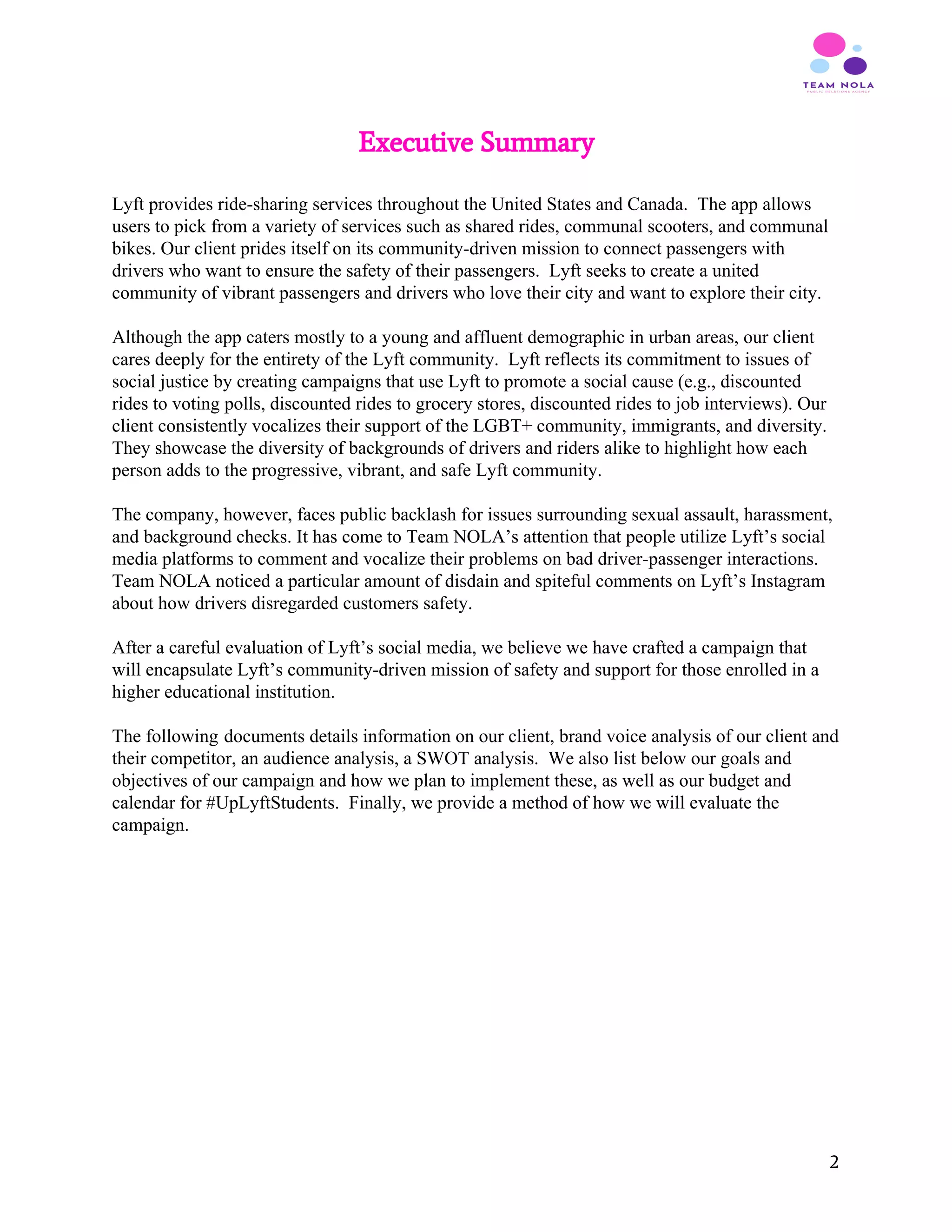
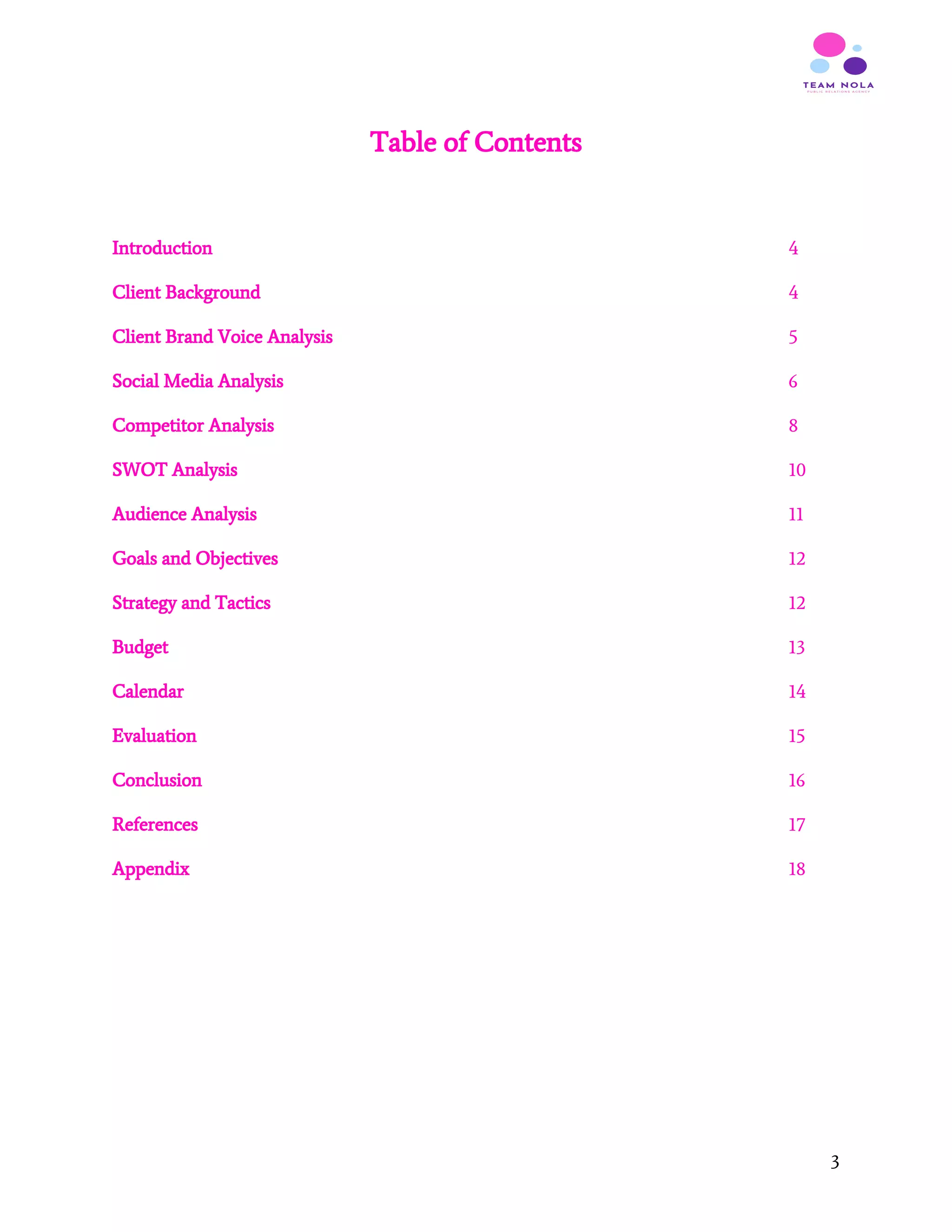
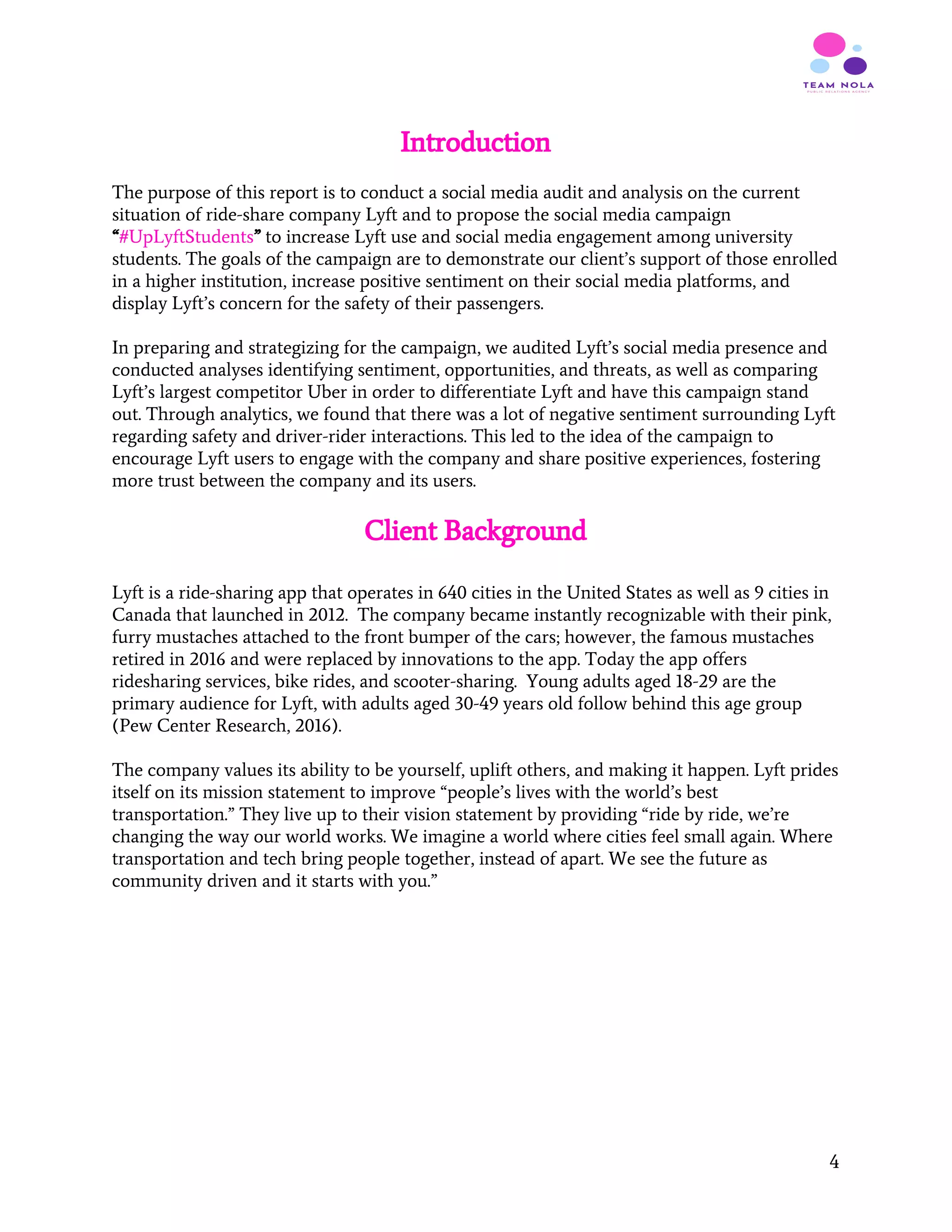


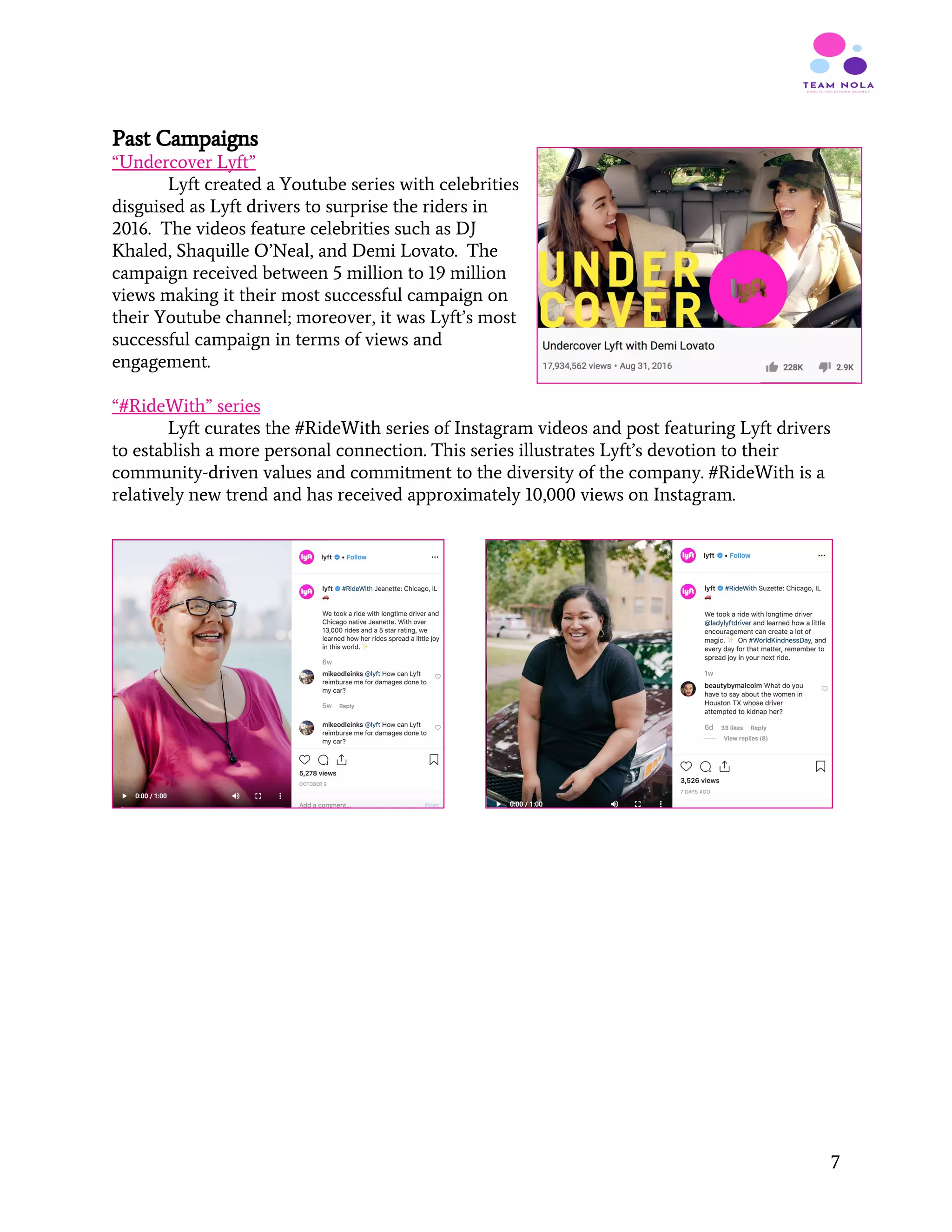








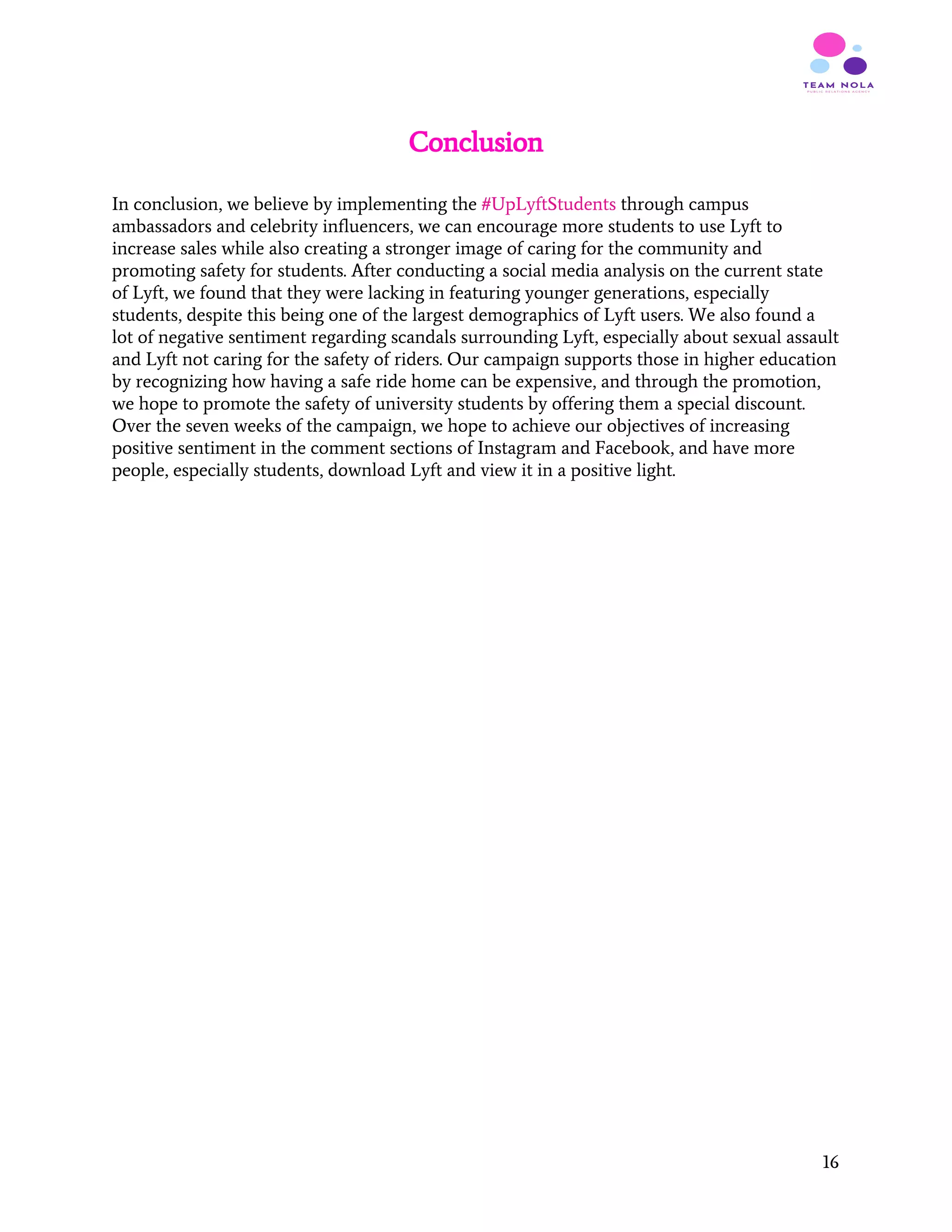
![References
Beer, J. (2019, March 29). How Lyft built its $24 billion brand image with pop culture.
Retrieved from
https://www.fastcompany.com/90327038/how-lyft-built-its-24-billion-brand-image-with-
pop-culture.
Greiner, A., McFarland, M., Sherman, I., & Tse, J. (2019, March 28). A history of Lyft, from
fuzzy pink mustaches to global ride share giant. Retrieved from
https://www.cnn.com/interactive/2019/03/business/lyft-history/index.html.
Grocer, S. (2019, April 11). How Uber and Lyft Compare, in Four Charts. Retrieved from
https://www.nytimes.com/2019/04/11/business/dealbook/uber-vs-lyft-ipo-financials.html.
Iqbal, M. (2019, April 29). Lyft Revenue and Usage Statistics (2019). Retrieved from
https://www.businessofapps.com/data/lyft-statistics/.
Lyft Mission, Vision & Values. (n.d.). Retrieved from
https://www.comparably.com/companies/lyft/mission.
Lebowitz, S., & Shontell, A. (2017, October 18). Lyft's cofounders met on Facebook and lived
on opposite coasts - here's how they launched a $7.5 billion startup long-distance.
Retrieved from
https://www.businessinsider.com/how-john-zimmer-and-logan-green-started-lyft-2017-1
0
Lyft, Inc. (n.d.). Become a Driver or Get a Ride Now. Retrieved from https://www.lyft.com/.
Lyft. (n.d.). Retrieved from https://www.facebook.com/lyft.
Lyft. (n.d.). Retrieved from https://www.instagram.com/lyft.
McGrath, F. (2017, August 16). The Demographics of Uber's US Users: GlobalWebIndex.
Retrieved from https://blog.globalwebindex.com/chart-of-the-day/uber-demographics/.
Perrin, A., & Anderson, M. (2019, April 10). Share of U.S. adults using social media, including
Facebook, is mostly unchanged since 2018. Retrieved from
https://www.pewresearch.org/fact-tank/2019/04/10/share-of-u-s-adults-using-social-medi
a-including-facebook-is-mostly-unchanged-since-2018/.
Reinhart, R. J. (2018, July 25). Snapshot: Who Uses Ride-Sharing Services in the U.S.?
Retrieved from
https://news.gallup.com/poll/237965/snapshot-uses-ride-sharing-services.aspx.
Smith, A. (2016, May 19). Who in America uses ride-hailing apps like Uber or Lyft. Retrieved
from https://www.pewresearch.org/internet/2016/05/19/on-demand-ride-hailing-apps/.
The Remarkable Rise of Influencer Marketing [INFOGRAPHIC]. (2019, March 19). Retrieved
from https://influencermarketinghub.com/the-rise-of-influencer-marketing/.
Uber by the Numbers: Users & Drivers Statistics, Demographics, and Fun Facts. (n.d.).
Retrieved from https://muchneeded.com/uber-statistics/.
Uber SWOT Analysis 2019: SWOT analysis of Uber. (2019, November 28). Retrieved from
https://bstrategyhub.com/swot-analysis-of-uber-2019-uber-swot-analysis.
17](https://image.slidesharecdn.com/coms325socialmediacampaignfinalpaper-191219042032/75/UpLyftStudents-Social-Media-Campaign-18-2048.jpg)
